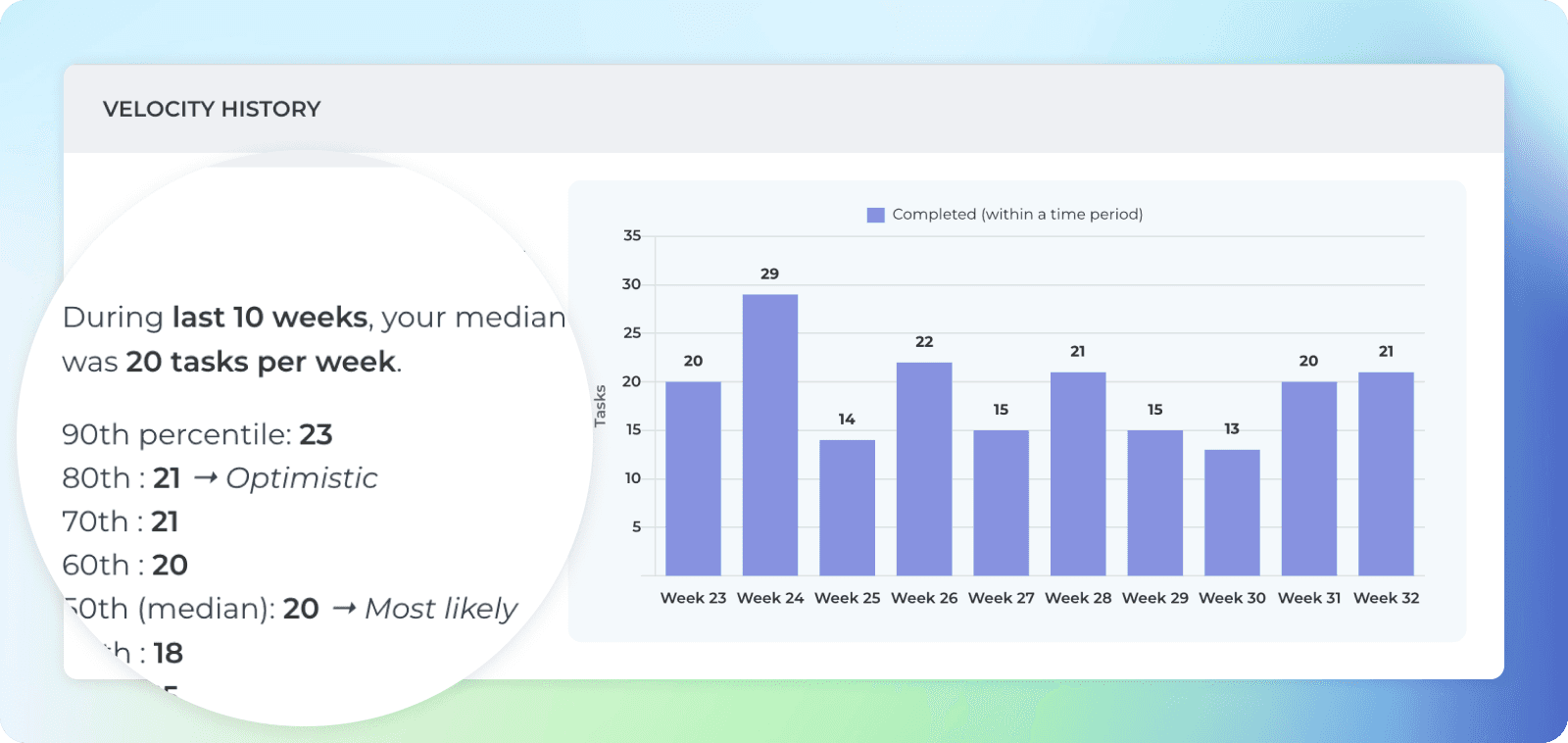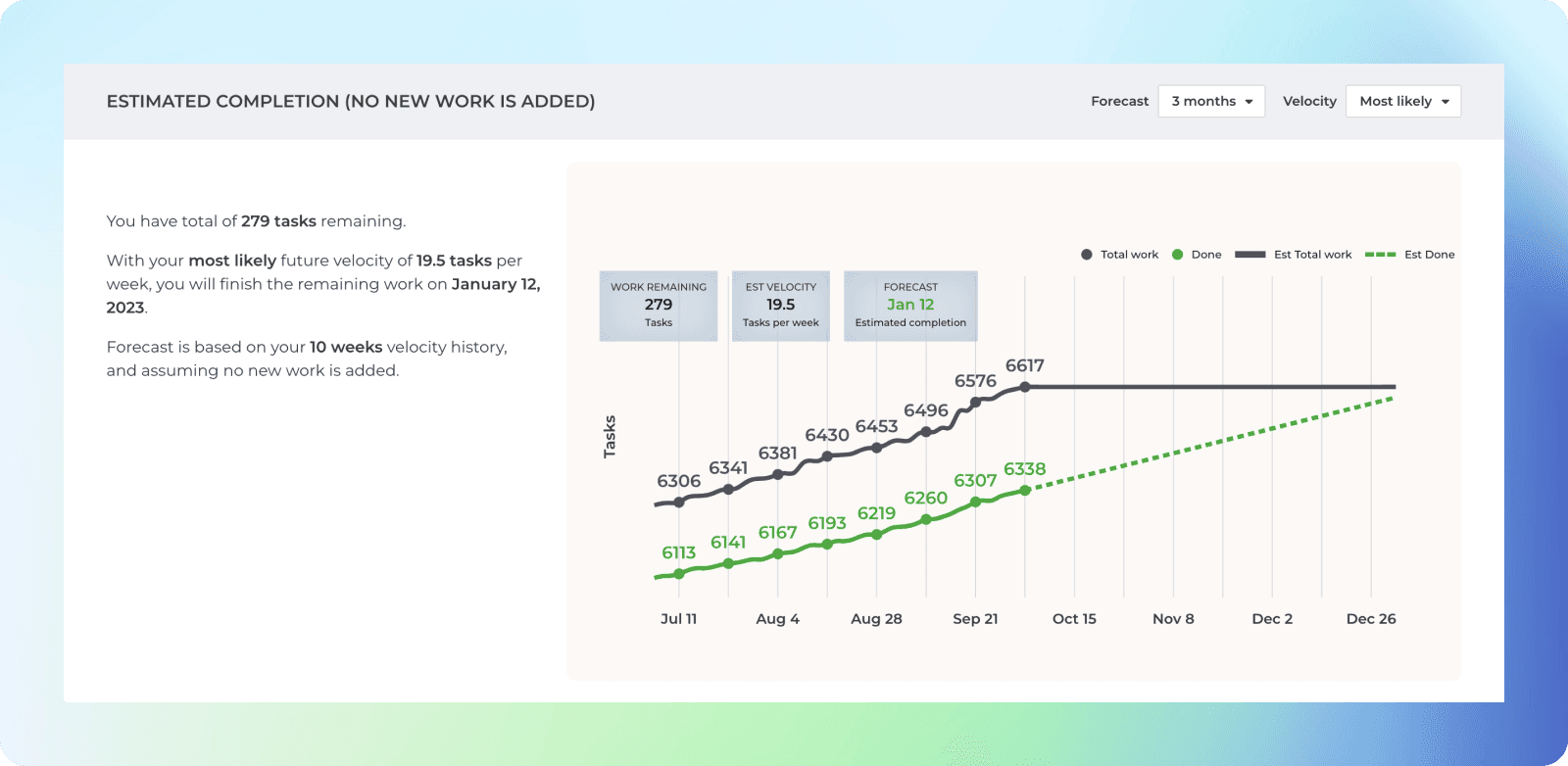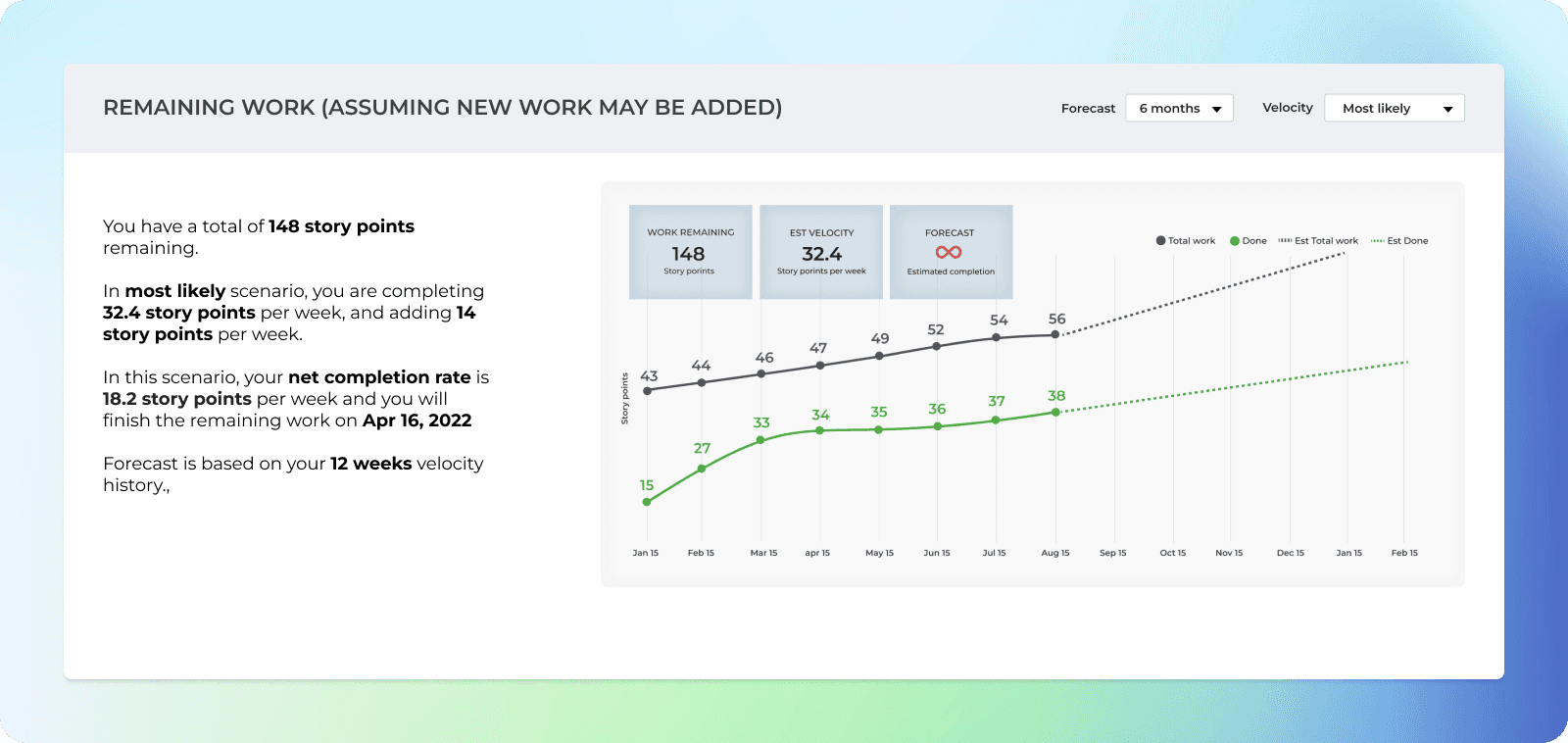Forecasts
The Forecasting insights tab helps you to see your past velocity and get a data-driven forecast for the completion of all the work. Instead of guesswork, you can use the data to make your own judgment!

Velocity history
The chart shows your historical velocity as the amount of work completed per week. You’ll see the different scenarios for your future velocity on the left. The Most likely scenario assumes that you will complete the same amount of work as you’ve had on a median week in the past. In the Optimistic scenario, you will complete at least the same amount as the top 20% of the weeks in the past. In the Pessimistic scenario, you will complete as much as the bottom 20% of weeks in the past.

Remaining work forecast
The chart shows a burndown of the remaining work on a weekly total until all the work is done. The leftmost bar is the current week and the rightmost bar shows the week when all the work is completed. As the work progresses, the remaining work reduces until it goes to zero.

Estimated completion (no new work is added)
The Forecasting chart consists of two lines, a black line representing the total work and a green line representing the work done so far. As time progresses, the green line approaches the black line helping to see how much work is still to be done.
The black line is flat for the future as it assumes no new work will be added. This chart provides an answer to the question “How long would it take to complete all the work in the backlog?”

Estimated completion (new work may be added)
In most types of project work, the full scope is not known in advance, and therefore new work is added along the way.
Unlike the previous chart, this one also looks at how much work has been added historically and includes that in the forecast. The forecast for the work scope is based on the same principles as the forecast of the work completed i.e. percentiles.